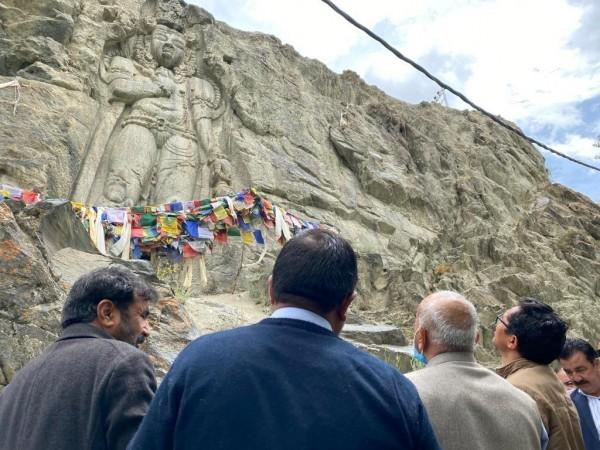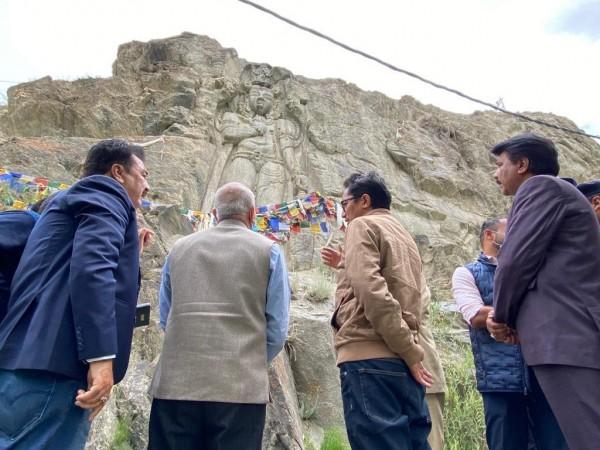Although it is already on the map of attractive sights of the cold desert, the administration of the Union Territory of Ladakh has decided to explore the full potential of the 8.5 metre-high statue of "Chamba (Maitreya Buddha)" at Karchey Khar in the Kargil district as a tourist destination.
Apart from taking effective steps to preserve his historic statue, the UT administration has decided to popularize this site to attract a maximum number of tourists in general and foreigners in particular.
Lieutenant Governor of Ladakh R K Mathur visited the 8.5 metre-high statue of Chamba (Maitreya Buddha) at Karchey Khar on Saturday. Historian Mohammad Sadiq briefed about the history of the statue and shared the efforts being made for the preservation of the statue and the tomb.

The Lieutenant Governor stressed the need for a protective wall for the statue and for full use of its potential as a tourist destination.
Importance of this monastery
"Chamba (Maitreya Buddha)" or "Mulbekh Gompa" is called a prime monastery in Kargil. Among many Buddhist monasteries located in Ladakh, this monastery is very special and attracts tourists who visit Ladakh.
The statue is the 30 feet long rock sculpture of the "Future Buddha", known as Mulbekh Chamba which catches the attraction of anyone who passes through the Srinagar-Leh national highway.

The statue is an amalgamation of esoteric Saivite symbolism with Buddhist artwork. The monastery and the statue are situated on the highway on a hilltop.
The statue is carved on a large boulder on the side of the road. The statue depicts a standing "Maitreya Buddha" or "Future Buddha". Various scholars and religious practitioners have highlighted the Kashmiri and Kushan influence in the designs and style of the carving.

The statue predates the Tibetan cultural influence that is evident in other works created in subsequent periods.
The monastery that is right on the highway and situated on a steep rock around 650 ft above the road, actually consists of two different monasteries—one Drukpa or the Red Hat sect and another Gelugpa or the Yellow Hat sect.
The sculpture was carved probably in the first century BC during the Kushan period. The "Future Buddha" is also known as "Chamba" and due to this reason, the monastery is often called "Mulbekh Chamba".










